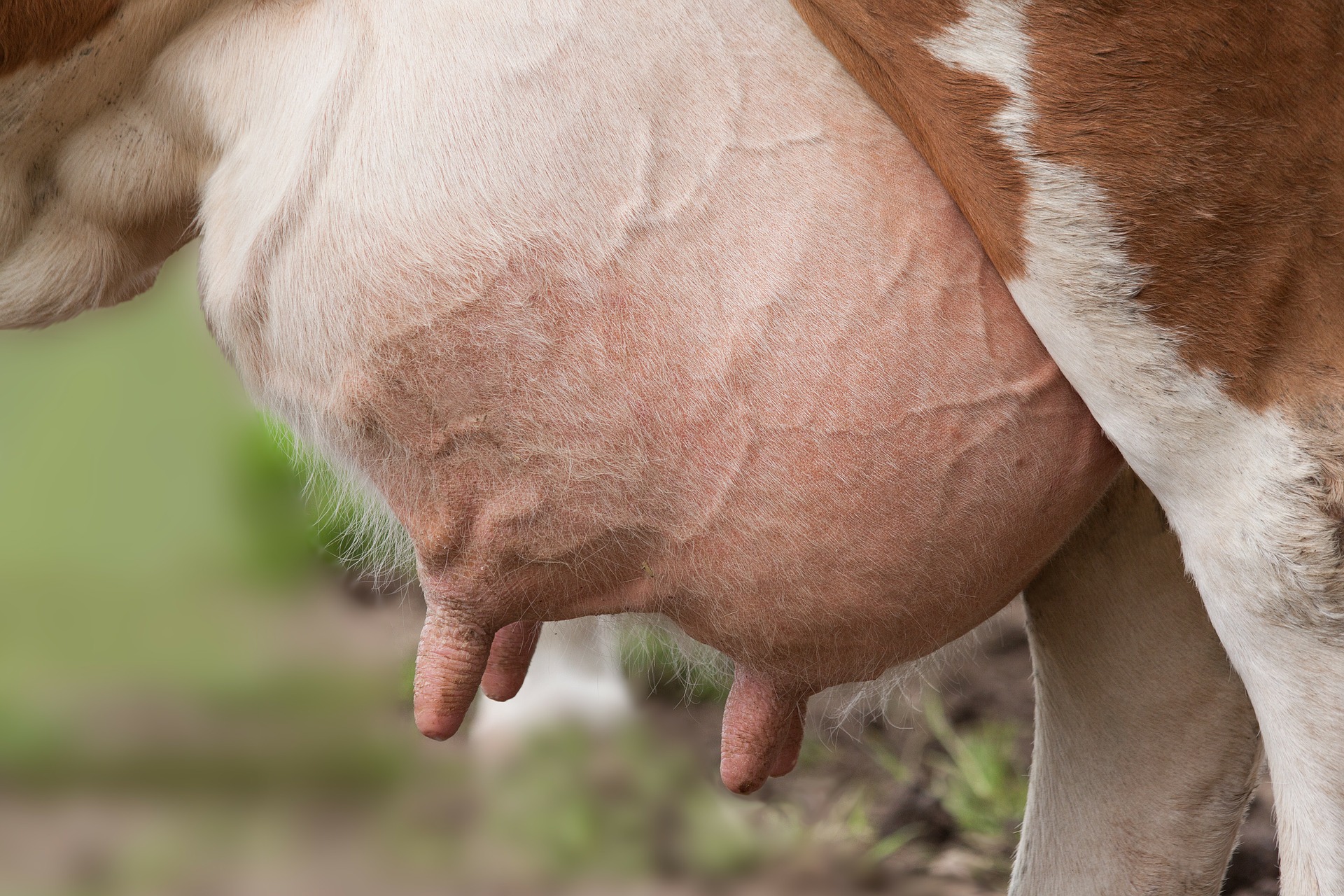New QGG research focuses on better animal welfare for dairy cattle
Researchers at the Centre for Quantitative Genetics and Genomics, Department for Molecular Biology and Genetics, Aarhus University, have located DNA variants that can lead to better udder health and animal welfare for dairy cattle.

It is in everyone’s interest to enhance animal welfare and reduce the need for antibiotics in livestock animals. In dairy production, mastitis is among the most common diseases, and cost farmers worldwide large sums every year in veterinary and medicinal expenses. This is why researchers in animal genetics are working on improving the overall genomic selection of dairy cows, in order to breed individuals with higher genetic resistance for mastitis. Better udder health will reduce the farmer’s costs, increase the cow’s welfare and provide better milk to the consumers.
In the article, the researchers state that a cow’s milking ability is defined by the milking speed, average milk flow rate, maximum milk flow rate, and total milking time. Milking ability influences the working time required for milking and is genetically correlated with mastitis incidence. If a cow is not properly drained when being milked, there is a higher risk of udder infection. It is therefore of major interest to the researchers and the industry to map the genes that promote genetic resistance to mastitis.
In this study, the researchers used genetic information from 4921 Nordic Holstein bulls genotyped with the BovineSNP50 bead chip array. The chip, however, only covers some 50,000 DNA variations uniformly spread over the entire bull genome’s millions of base pairs. To compensate for this, researchers use a technique called imputation. By means of statistical inference, the imputation fills in the blanks between the already known genotypes mapped by the SNP50 chip to give a broader, statistically founded, picture of the whole genome. In this study, the already known genotypes were therefore imputed to high-density genotypes, and subsequently to a whole genome sequence.
The researchers then carried out several analyses, where they specifically looked for markers for the two traits udder index*) and milking speed, including a multitrait meta-analysis for the two traits. The strongest signals for udder index and milking speed were found on chromosomes 19 and 20, which correlate with earlier findings, and indicate to researchers where to look further for genes that favour mastitis resistance in cows.
The important findings in this study can be exploited for a better prediction accuracy in routine genomic selection. For breeders and dairy farmers this means better udder health and subsequently better animal welfare and lower costs for antibiotics and veterinary assistance.
*) In the article, the researchers state that the udder index describes the genetic potential for udder conformation and is a linear combination of subindices for fore udder attachment, rear udder height, rear udder width, udder cleft/support, udder depth, teat length, teat thickness, teat placement (front), teat placement (back), and udder balance.
The research was carried out at the QGG-based Center for Genomic Selection in Animals and Plants (GenSAP)
For more information:
